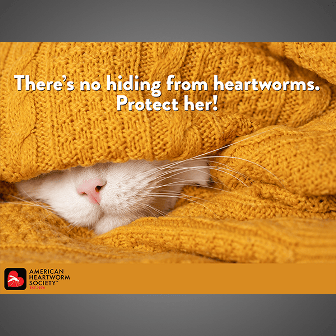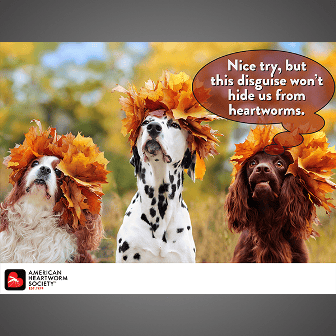ELIZABETH CLYDE DRUIN, DVM
The American Heartworm Society (AHS) guidelines for heartworm prevention, diagnosis and treatment are much more than reference documents. They equip veterinarians like me to make life-saving differences in my patients’ lives.
The Surprise Infection
Many clients question the need for annual heartworm testing, particularly if their dog is on year-round prevention.
I work with several local kennels that board and train dogs for hunting and retrieving. As part of their care, the trainers bring the dogs to our practice every month for examinations and administration of heartworm preventives. These dogs are valuable, and their owners and trainers are committed to providing quality care. That’s why I was surprised when one of the dogs tested heartworm-positive. It turned out that the dog had been boarded at a kennel in a different part of the state just over a year earlier, and the person running that kennel had been less than reliable about heartworm prevention.
When clients ask me if they can skip their dogs’ annual heartworm test, I remind them that a year is too long to have heartworms. Annual testing is a must.
Patience with the Treatment Protocol
When a dog tests positive for heartworm, the AHS protocol includes a 60-day pre-treatment phase during which dogs are administered doxycycline and two doses of a monthly heartworm preventive prior to beginning melarso- mine injections. This phase is vital, but waiting can be difficult for caring owners who want treatment to be immediate.
The goal of pretreatment with doxycycline is to reduce the pulmonary pathology that results when the adulticide is administered, while administration of a heartworm preventive reduces new infections and eliminates existing susceptible larvae. In addition, worms between 2 and 4 months of age can mature during this time frame to a point where they will be more susceptible to melarsomine.
I recently treated a dog that came in as a referral case needing surgery for an ear tumor. The surgery was successful, but eight months later he returned to us coughing and symptomatic for heartworm infection. After diagnosis, we initiated the pre-treatment protocol by the AHS. And while our practice has followed this protocol for some time, I was amazed to see how much the patient’s condition improved during this phase. Yes, it troubles some owners to wait for “treatment” to begin, because they want the heartworms eliminated. But cases like these make it clear that trusting and following the AHS protocol is likely to yield better patient outcomes.
As a member of the AHS board, I strongly support its tenets of year-round heartworm prevention and annual heartworm testing, as well as the AHS guidelines for heartworm treatment. As a practicing veterinarian, I appreciate that the guidelines are much more than words on paper; they provide scientific support for the life-saving recommendations I make every day.
ELIZABETH CLYDE DRUIN, DVM
CLYDE’S ANIMAL CLINIC
MATTOON, ILLINOIS







